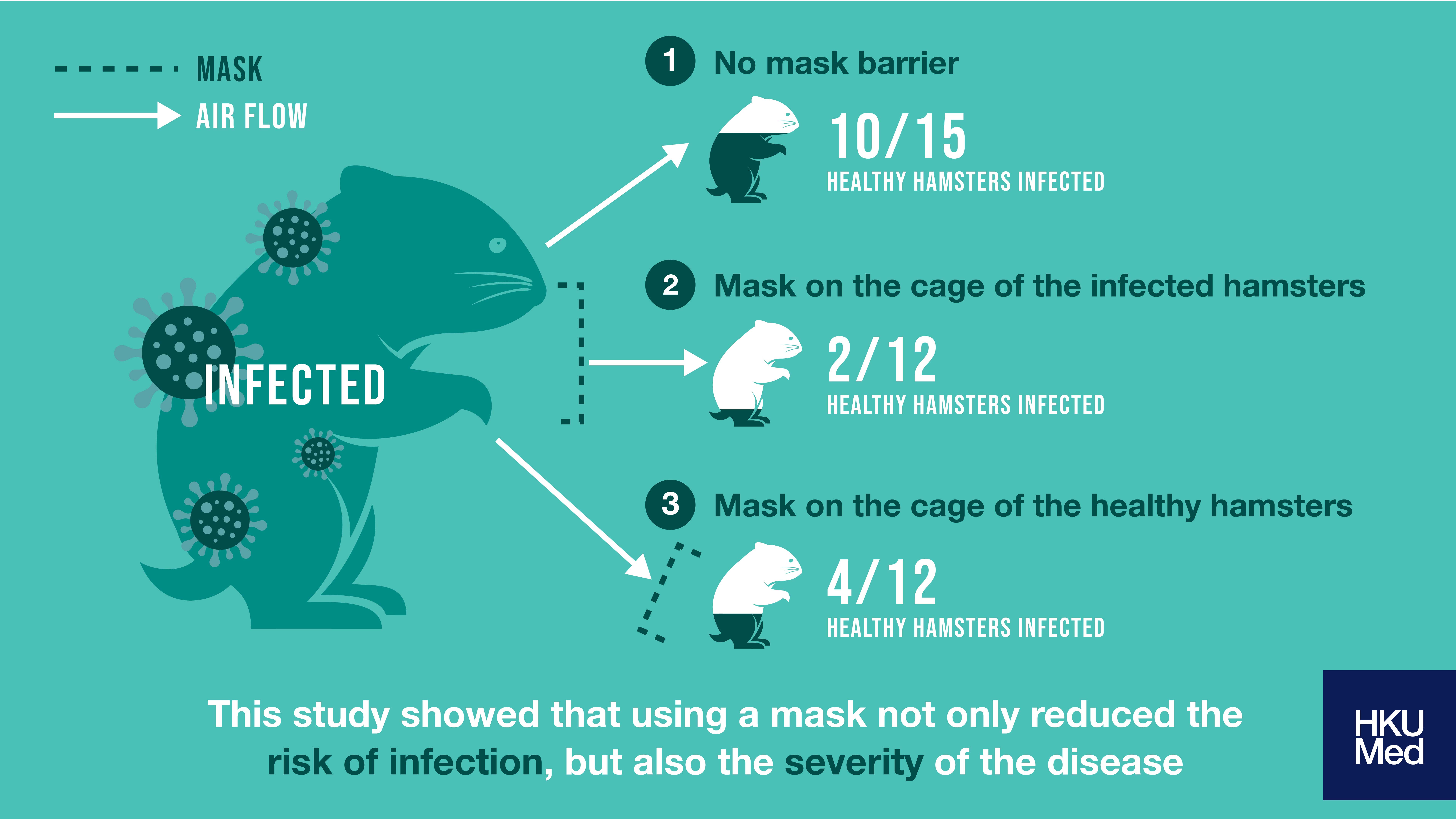SARS-CoV-2 is believed to be transmitted through respiratory droplets. Wearing a surgical mask may lower the risk of being exposed to respiratory droplets. However, there is a lack of scientific evidence to support the use of surgical masks in COVID-19. A team of experts from HKUMed examined the use of surgical masks to prevent virus transmission in golden Syrian hamsters. Healthy and infected hamsters were housed in separate cages placed next to each other. A surgical mask barrier was used to separate the cages, with air flowing between the infected hamsters (controls) to the healthy hamsters. Study results were published in Clinical Infectious Diseases, a leading medical journal.
Key takeaways from the study:
- The hamsters in the infected control group showed signs of tiredness, ruffled fur, hunched back and rapid breathing 2 days after SARS-CoV-2 was introduced through the nose.
- Experiment 1: 66.7% (10/15) of healthy hamsters were infected with SARS-CoV-2 when they did not have surgical mask protection.
- Experiment 2: The infection rate among healthy hamsters was 16.7% (2/12) when the surgical mask barrier was placed in the cage with infected hamsters.
- Experiment 3: When the surgical mask barrier was placed on the side of the healthy hamsters, the infection rate was 33.3% (4/12).
- The disease was more severe in the original infected hamster group than in the healthy hamsters that were infected through viral transmission. This was because the infected hamsters in the control group received a larger amount of virus than the healthy hamsters, which were infected through respiratory droplets or aerosols.
Adding a surgical mask barrier to the cages of the infected hamsters, rather than to the cages of the healthy hamsters, appeared to be more effective in reducing viral transmission. This study also showed that using a mask not only reduces the risk of infection, but also the severity of the disease. During COVID-19, wearing a surgical mask prevents viral spread and reduces the exposure to saliva and respiratory droplets. The mask also protects against accidental contamination from touching of the nose and mouth.
To read the original article published in Clinical Infectious Diseases, click here.

(Note: substitute index for infected control and naive for healthy)